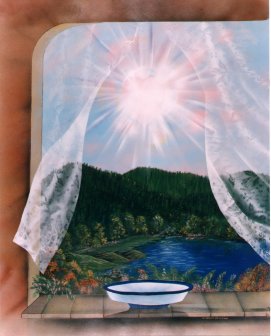
Pranayama – Working With The Flow of Life Force Through Breath

Pranayama is the measuring, control, and directing of the breath as a way to control and manage within ourselves the flow of our life-force energy (prana). It is a profound tool for restoring and maintaining health and vitality. When we work consciously with the breath—inhalation, exhalation and the pauses between—it becomes neutralized and perfect relaxation and balance of body activities are realized. In practicing the art of yoga, we are concerned with balancing the flows of vital forces and directing them inward through the chakra system of energy centers in the body (see below). The breath can help awaken life force in the root chakra and move it upward towards the crown chakra creating an energized and fully integrated energy body. Referred to as “raising the Kundalini,” this awakened and integrated energy leads to heightened awareness and conscious living.
Pranayama, or breathing technique, is very important in yoga. It goes hand in hand with practicing the asanas or poses. In the Yoga Sutra, the practices of pranayama and asana are considered to be the highest form of purification and self discipline for the mind and the body. The practices produce the actual physical sensation of heat, called tapas, or the inner fire of purification. It is taught that this heat is part of the process of purifying the nadis, or subtle nerve channels of the body. This allows a more healthful state to be experienced and allows the mind to become more calm. As the one follows the proper rhythmic patterns of slow deep breathing the patterns strengthen the respiratory system, soothe the nervous system and reduce our uncontrolled craving. As desires and cravings diminish, the mind is trained to experience more freedom and focused concentration.
The Buddhist teacher Thich Nhat Hanh makes the following statement about working with the breath: “Breath is the bridge that connects life to consciousness, which unites your body to your thoughts.” Seen this way, breath work helps one to connect with the “inner light” and create an energetic balance in the nervous system of the body. The inhalation stimulates the sympathetic system and the exhalation stimulates the parasympathetic system.
The following are the primary pranayama exercises taught in the West:
Ujjayi – Powerful Breath : This is the classic “yoga breath” practice during seated meditation and especially while practicing asana (doing the poses). It is accomplished by breathing through the back of the throat – the glottis – and releasing a long sign type sound. It calms the mind and gives an audible feedback as to your rhythm and steadfastness of breath.
Sama Vrtti – Uniformity in duration of all elements of the breath: This technique has one breath in and out at equal lengths. It can be modified by equalizing the duration of pause at the top of the breath and the bottom of the exhalation.
Nadhi Shodhana – Alternate nostril breathing : The breath is channeled in and out through alternate nostrils by pressing one side closed at a time while breathing in and shifting to the other nostril for breathing out.
Viloma – Against the grain: this technique has one inhale or exhale in short steps followed by a pause at each step. Kapalabhati – Shining the inside of the skull : The emphasis in placed on quick exhalations done through the nose pumping the lower belly in to force the breath up and out.